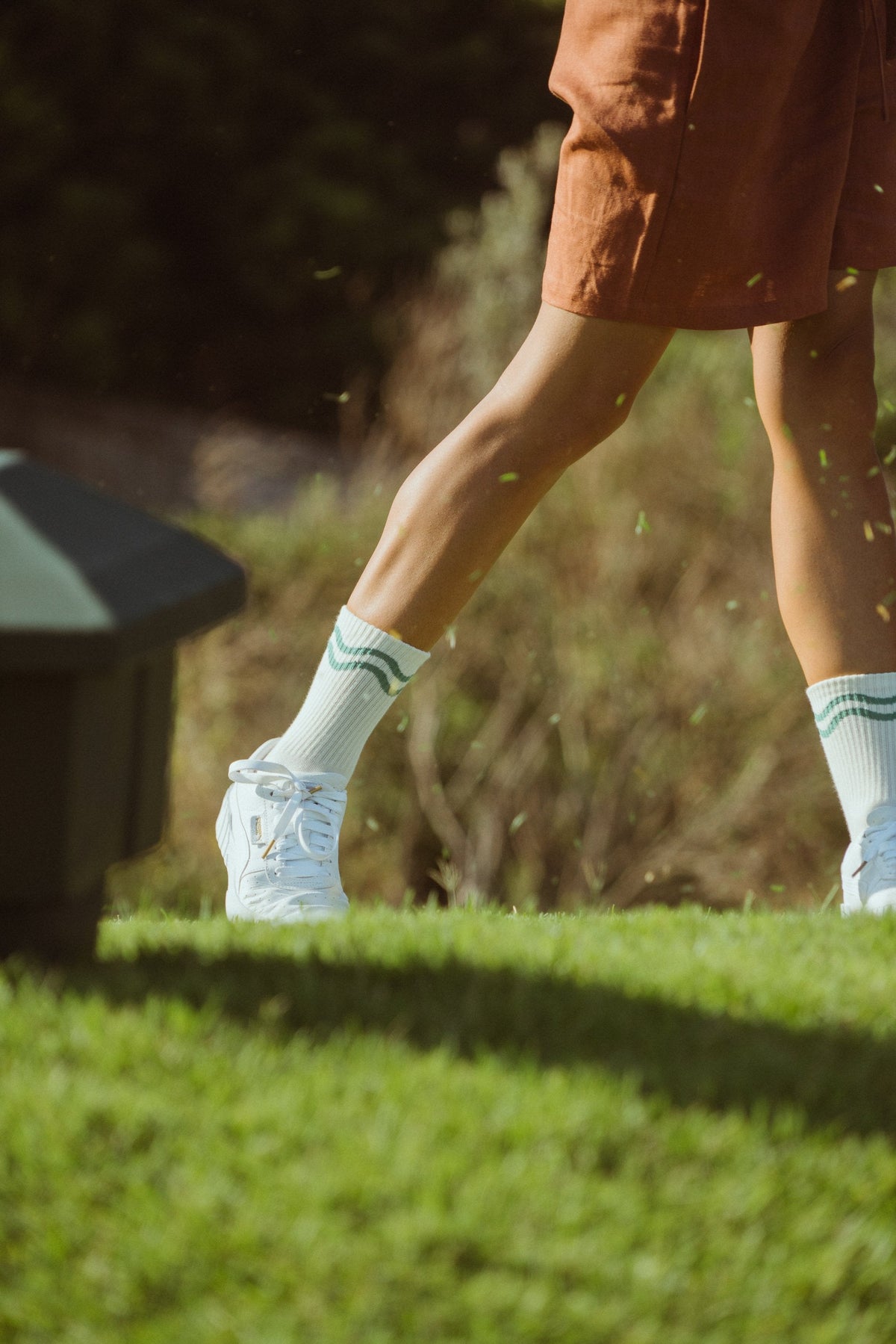The entrance to Freeway GC is pretty box office, and does a job for anyone wondering why they named it so.
A slender bridge loops you over Melbourne’s Eastern Freeway and instantly into a hemmed-in microcosm of golf and greenery, with the hum of cars a soft white noise drowned out by the visually impressive golf course out front.
This is a public golf course with golfers in mind. Heaps of memorable features, a solid challenge and $41 for a weekend round. Not forgetting the crater-like bunkers gouged into the land by wooden sleepers.

These are just one of a bunch of areas Freeway has recently redeveloped and reupholstered around the course, now being operated by GreenSpace Management in partnership with the City of Boroondara. The rest can be found in the way they’re managing the A-List Aussie flora and fauna, as we found out having a yarn with Ben Hartley, the groundskeeper:
“There’s 1 or 2 echidna’s, I know we’ve got platypus in the creek. Kangaroos and deer running around as well.”
Sounds more like a course in Tassy than a muni course 20 mins from the bustle of Melbourne’s inner city.
Ben, a greenskeeper alumni from the home of golf, St Andrews in Scotland, and a top bloke, with a very matter of fact approach to his task. He’s no twitcher by any sense, but recognises the importance of biodiversity in the beauty of playing golf, and the impact his management on the course can have.
“The best way to explain what we do is that we teaspoon feed only what’s needed. Any control we put out is only to cover what needs to be done, and nothing excess is running off into the ecosystem.”
“Long gone are the days when, like farmers, you’d just go and spray nitrogen everywhere. We won’t use anything that’s going to be detrimental to the environment.”

Nitrogen-based fertilisers clog up waterways by creating algae blooms and end up poisoning the water supply. Much of Ben’s work whilst retaining the quality of Freeway, is also connected to the Biodiversity directions provided by local council.
“We’ve got a biodiversity team, who are coming in and doing a lot of native plantings for our area. It’s connected to council and the organisation that visits us, that’s their job, going to golf courses and helping them. Every golf course is doing it, to prove we’re a sustainable and environmentally-friendly operation.”
Ben’s referencing the Protecting Victoria’s Environment – Biodiversity 2037 plan, set in 2017, which has the ambition of protecting what exists, regenerating areas and species that have declined and committing to a nature-first mentality in town and country planning. A feather in the cap of Victorian town planning that’s continuing to foster some cracking public courses in the state.
Ben’s also the proud parent to the Operation Pollinator scheme at Freeway, an international biodiversity program to boost the number of pollinating insects on commercial properties. He was introduced to it after having been a part of the installation of the first system on the hallowed Old Course in St Andrews.

“When I worked at St Andrews they did the Operation Pollinator Scheme 10 years ago, that’s where it started, and they wanted bee life to help maintain all the types of grass and plants and not just have a monoculture.”
“We wanted to promote that [at Freeway] as bees are pretty fragile, but if you’ve got bees on your property then you’re doing the right things, and we’ve got lots of native plants and flowers, that will encourage them to grow.”
Walking the course at Freeway, currently it’s still a work-in-progress. The 3 areas under Ben’s management, “fairway, greens and tees”, are in great nick, but you can see the rough and forest management and recultivation being undertaken. Replanting trees, regrowing rough and thickening out of the fauna.
Great news for the wildlife, bad news for any wayward tee shots.

